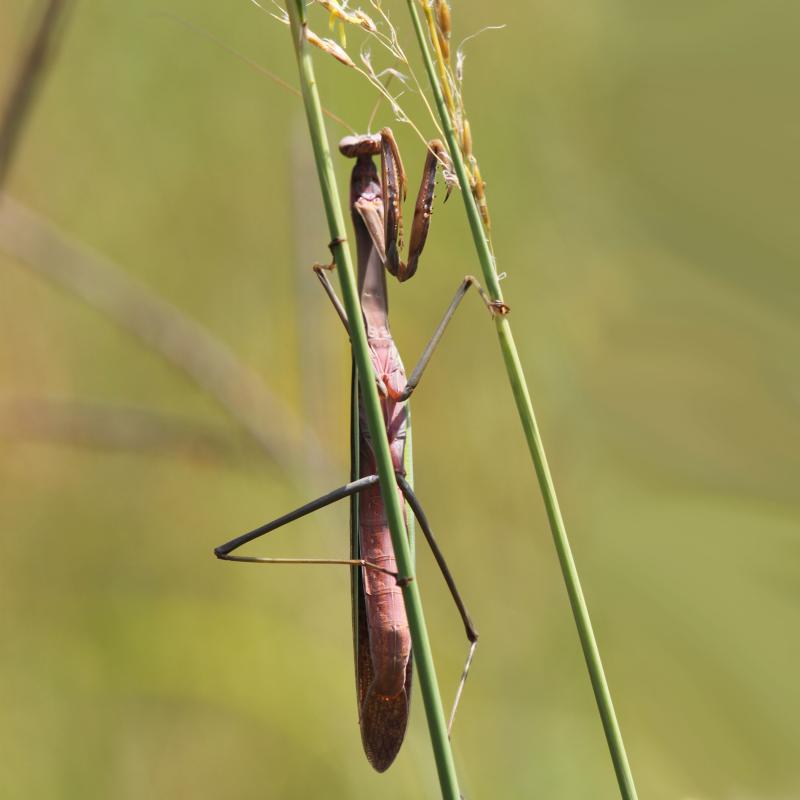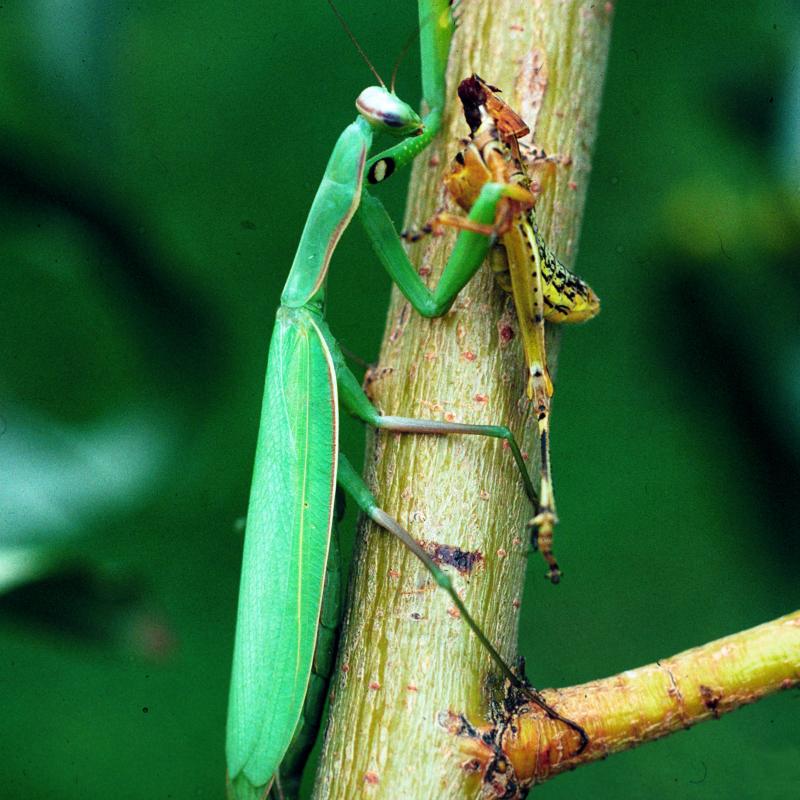The short answer to the title of the article is yes. Praying mantises are always a very popular topic at the South Dakota State Fair. This is in part because praying mantises aren’t frequently observed due to their “sit and wait” predatory nature. It is also because, during this time of the year, praying mantises begin moving out of their summer hunting grounds and are noticed more.
Both the European mantis and the Chinese mantis can be found in South Dakota. As their names indicate, neither species is native to North America. The Chinese mantis was introduced to the United States in 1896 and the European mantis was introduced in 1899.
Chinese Mantis

This praying mantis can be up to five inches long and ranges in color from pale green to tan (Figure 1). Generally, they are tan with a green line running down the side of the body. The green line is actually the edge of the hind wing that sticks out from underneath the tan leathery forewing. Like all mantises, this species has modified raptorial forelegs that are used for capturing prey.
European Mantis

This praying mantis can be three inches long and will also be tan to bright green in color (Figure 2). A distinguishing characteristic of the European mantis is the black “bulls-eye” pattern present on the inside of both raptorial forelegs.
Both the Chinese and European mantis are generalist predators that feed on other insects. They will consume any moving insect, arthropod, or small mammal that meets their dietary requirements. Chinese mantis egg cases are routinely sold for biological control through nurseries or garden suppliers. However, there is little pest management benefit associated with artificially introducing these predators due to their life history characteristics. Praying mantises have a single generation per season, which prevents them from increasing their populations in response to increased pest pressure. And since they are generalist predators, the newly hatched mantids will consume each other if confined. Mantids overwinter as an egg case, and their overwintering success is low due to cold, dry conditions.
The presence of praying mantises in South Dakota may be attributed to the distribution of egg cases for biological control purposes. They do well in tall grass habitats, which are abundant in South Dakota. It is also possible that, although their overwintering success is limited, some individuals survive the winter in South Dakota and maintain small populations.
If you spot a praying mantis, keep in mind that they can be a relatively low-maintenance short-term pet. They can be kept in a minimalist terrarium but will require food. It is best to feed them moths, flies, and small crickets. It is important to not put too many crickets (or grasshoppers) in with a praying mantis as they can overwhelm a mantis and actually kill and eat it.


